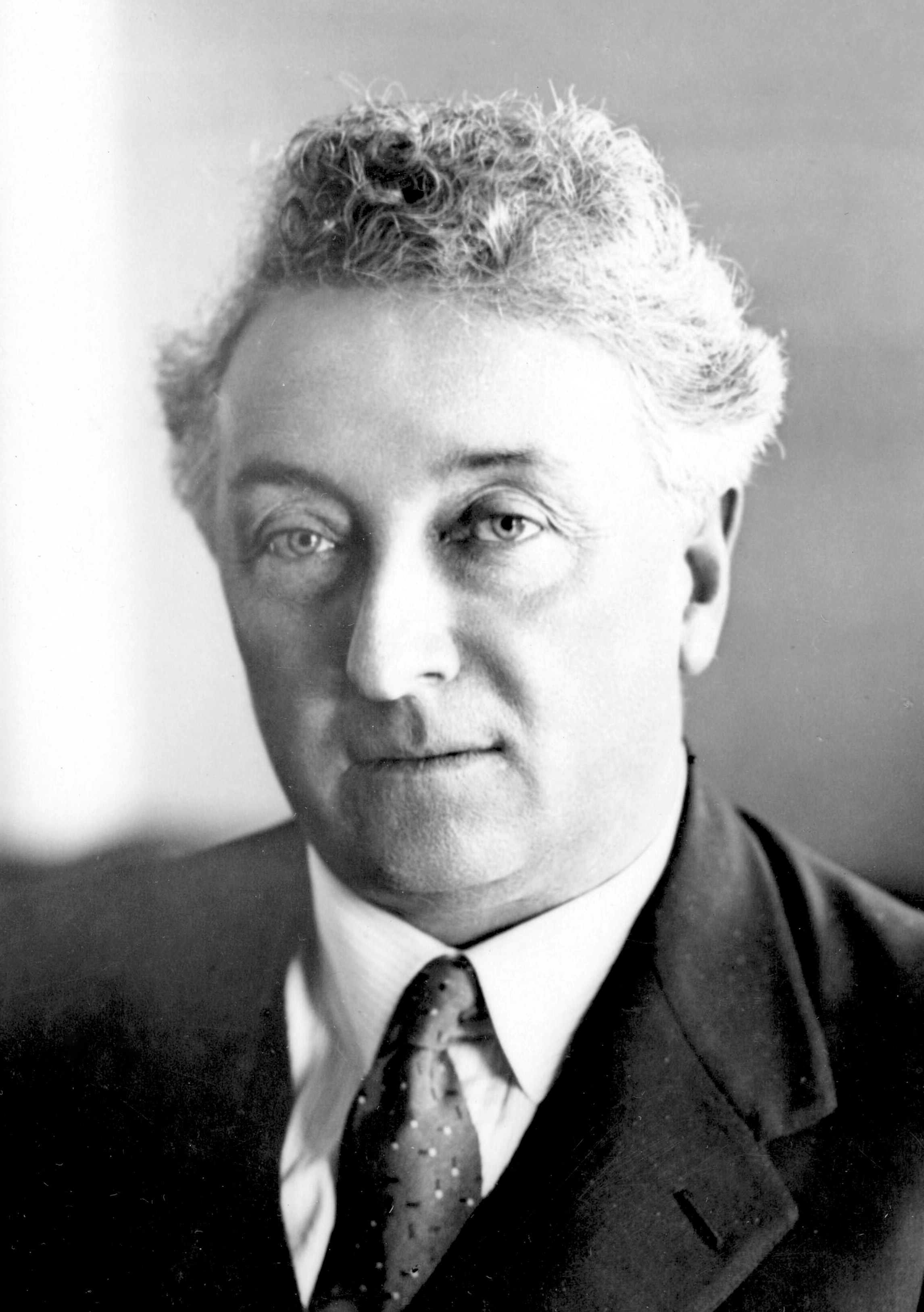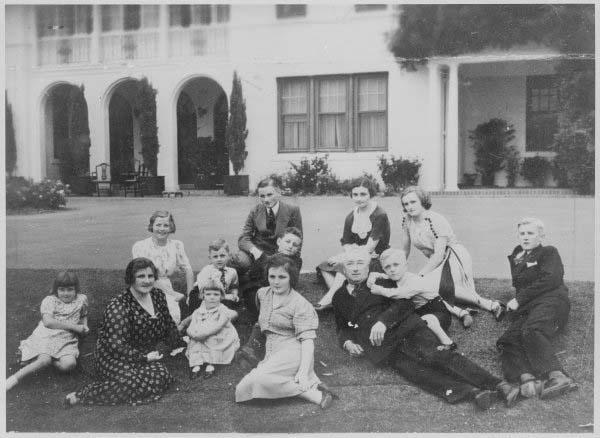Lyons, Joseph (1879-1939), served as prime minister of Australia from 1932 until his death in 1939. Lyons, a member of the United Australia Party (UAP), held office during the difficult years of the Great Depression, a worldwide economic slump that began in 1929. He introduced legislation to help bankers, farmers, and laborers survive and recover from the tough economic times. Lyons began his career as a schoolteacher and later served as premier of Tasmania. Nicknamed “Honest Joe,” Lyons was well liked by the Australian people.

Early life and family
Joseph Aloysius Lyons was born on a farm near Stanley, in the British colony (later the Australian state) of Tasmania, on Sept. 15, 1879. He was the fourth of eight children born to Irish immigrants Michael and Ellen Lyons. Michael Lyons struggled to provide for his family, eventually suffering a breakdown that left him incapacitated. Young Joseph—familiarly known as Joe—went to work at the age of 9 to help support the family. With the aid of his two aunts, young Joe returned to school at age 12. He excelled, becoming a student teacher in 1895 and qualifying as a teacher in 1901.
In 1913, Lyons met Enid Muriel Burnell (1897-1981), the daughter of a woman active in the Tasmanian Workers Political League, the forerunner of the Australian Labor Party (ALP) in Tasmania. The couple married on April 28, 1915, and had 12 children: Desmond (born in 1916), Sheila (born in 1918), Enid (born in 1919), Kathleen (born in 1920), Moira (born in 1922), Kevin (born in 1923), Garnet (born in 1924; died in infancy), Brendan (born in 1927), Barry (born in 1928), Rosemary (born in 1929), Peter (born in 1931) and Janice (born in 1933). Kevin eventually became deputy premier of Tasmania.

Political career
In 1905, while teaching in Smithton, Joseph Lyons founded the Duck River branch of the Workers Political League. Lyons eventually quit teaching and on April 30, 1909, won the seat of Wilmot in the state House of Assembly, the lower house of Tasmania’s Parliament.
Tasmanian Parliament.
As a member of the state Parliament, Lyons pushed for free education and medical coverage for children, aid for small farmers, factory legislation, and the breaking up of large estates. In 1912, Lyons was elected head of the state branch of the ALP. Over the next several years, Lyons served as treasurer, minister for education, and minister for railways. He reformed the Education Department, eliminating school fees, improving pay and conditions for teachers, and establishing new schools.
World War I (1914-1918) saw many Australian volunteers sent overseas to fight with the forces of the United Kingdom. But when Australia’s leaders considered military conscription (draft) for overseas service, Lyons argued strongly against it. On Nov. 2, 1916, Lyons became parliamentary party leader of the ALP. In December 1919, he ran for a federal seat in the Australian House of Representatives but did not win. In October 1923, Lyons was elected premier of Tasmania, keeping the ALP in power there until 1928.
Federal Parliament.
On Oct. 12, 1929, Lyons won the Wilmot (Tasmania) seat in the Australian House of Representatives. In the federal Cabinet, he served as postmaster general, minister for works and railways, and acting treasurer. Much of his time was spent dealing with the onset of the Great Depression. In January 1931, Lyons resigned from the Cabinet over differences in economic strategies to meet the crisis. In March, he became leader of the newly formed UAP. In December, the UAP won national elections, and Lyons became prime minister of Australia. He was sworn in on Jan. 6, 1932, becoming the first Tasmanian to serve as prime minister.
Prime minister.
During his time as prime minister, Lyons’s primary responsibility was restoring stability to the government and the country during the Great Depression. Lyons was generally successful in this goal. He controlled inflation and reduced debt and government spending. In developing his policies, Lyons relied heavily on the experience of his Cabinet. Tough economic choices, however, led to dissension in the Cabinet, and its ministers changed regularly. In September 1934, Lyons won reelection. However, the UAP barely retained power, forcing a coalition government with the Country Party (now the National Party). The election of October 1937 had a similar outcome.

While dealing with the challenges of the Great Depression, Lyons also faced increasing world tension as Germany, Italy, and Japan threatened to plunge the United Kingdom—and thus, Australia—into a second world war. Though he opposed conscription for overseas service, Lyons prepared Australia by strengthening the country’s Army, Navy, and Air Force. He also opened the first factory of the Commonwealth Aircraft Corporation, which had been established to build military aircraft, and he planned armaments factories and naval shipyards.
Lyons worked well within the government and was popular with the voters. He campaigned vigorously when he needed to, traveling the vast distances of Australia by airplane. His large family was often in the public eye. In 1936, King George VI of the United Kingdom made Enid a dame grand cross in the Order of the British Empire, an honor similar to knighthood. She then became known as Dame Enid Lyons.
Among the most important legislation under Lyons’s leadership was the Australian Broadcasting Commission (ABC) Act, which established the ABC (now called the Australian Broadcasting Corporation) in 1932. Lyons’s government also passed environmental protection acts that restricted whaling and the dumping of refuse into the sea, as well as air travel regulations and trade restrictions with Italy. Other acts aided dairy, sugar, and wheat farmers; eased welfare restrictions; and provided tax relief. Such measures reflected the tough economic times.
The final months.
By 1939, Lyons’s health began to fail, and his grip on the UAP and the prime ministership was slipping. He began to lose the support of key allies, including Robert Menzies, his attorney general, minister for industry, and the deputy leader of the UAP. On March 14, 1939, Menzies resigned from the Cabinet and prepared to challenge Lyons for control of the UAP. But on April 7, Lyons suffered a heart attack on his way home for Easter, and he died in a Sydney hospital. Lyons was the first Australian prime minister to die in office. His body was taken home to Devonport, Tasmania, for burial.
Deputy Prime Minister Earle Page served as caretaker prime minister for 18 days until the UAP elected its new leader, Robert Menzies. Menzies became prime minister on April 26, 1939. However, the UAP disintegrated and ceased to exist by 1945.
Following the death of her husband, Dame Enid Lyons remained politically active, becoming the first woman elected to the House of Representatives in 1943. In 1949, she became the first woman appointed to the federal Cabinet.
